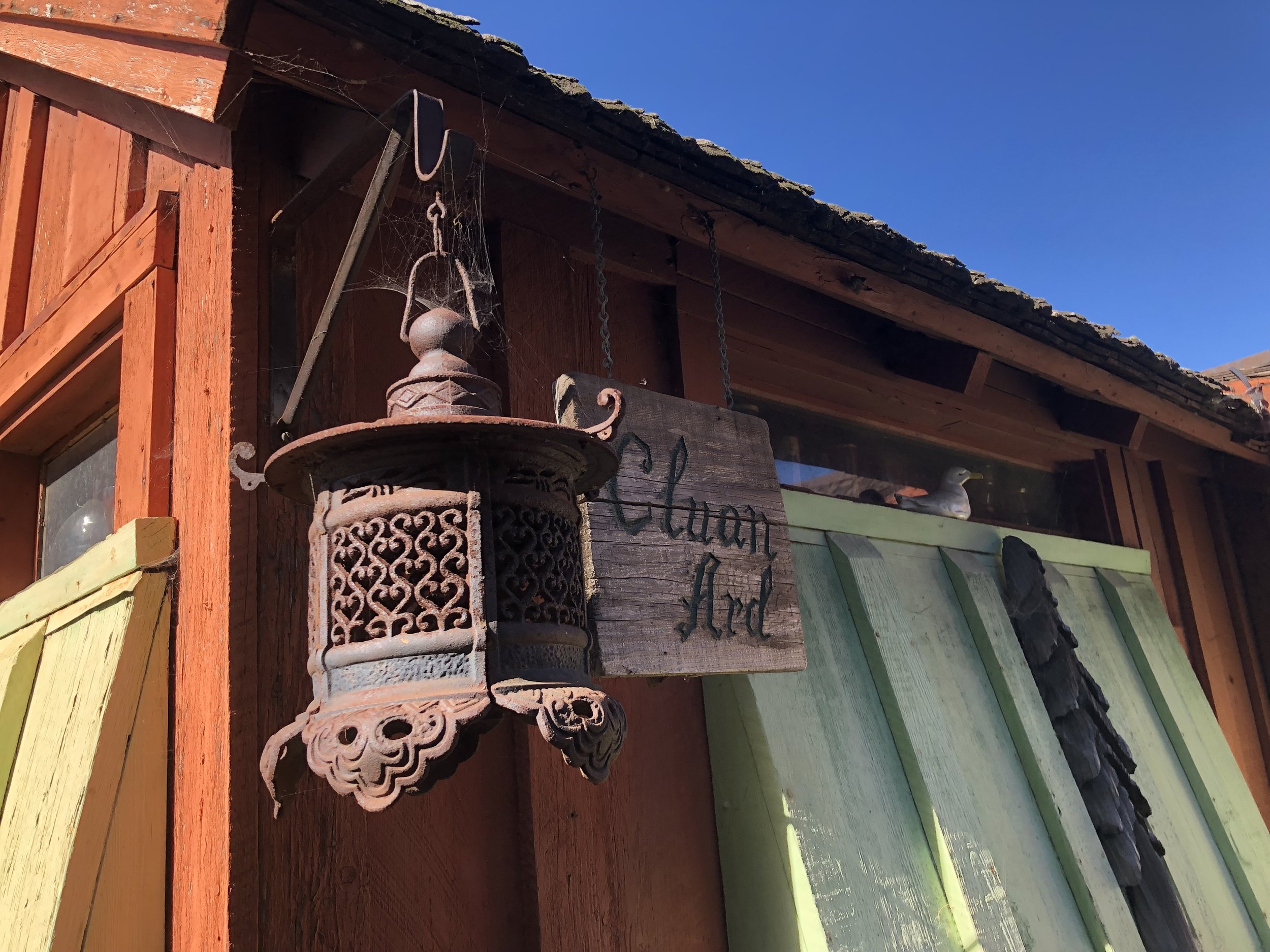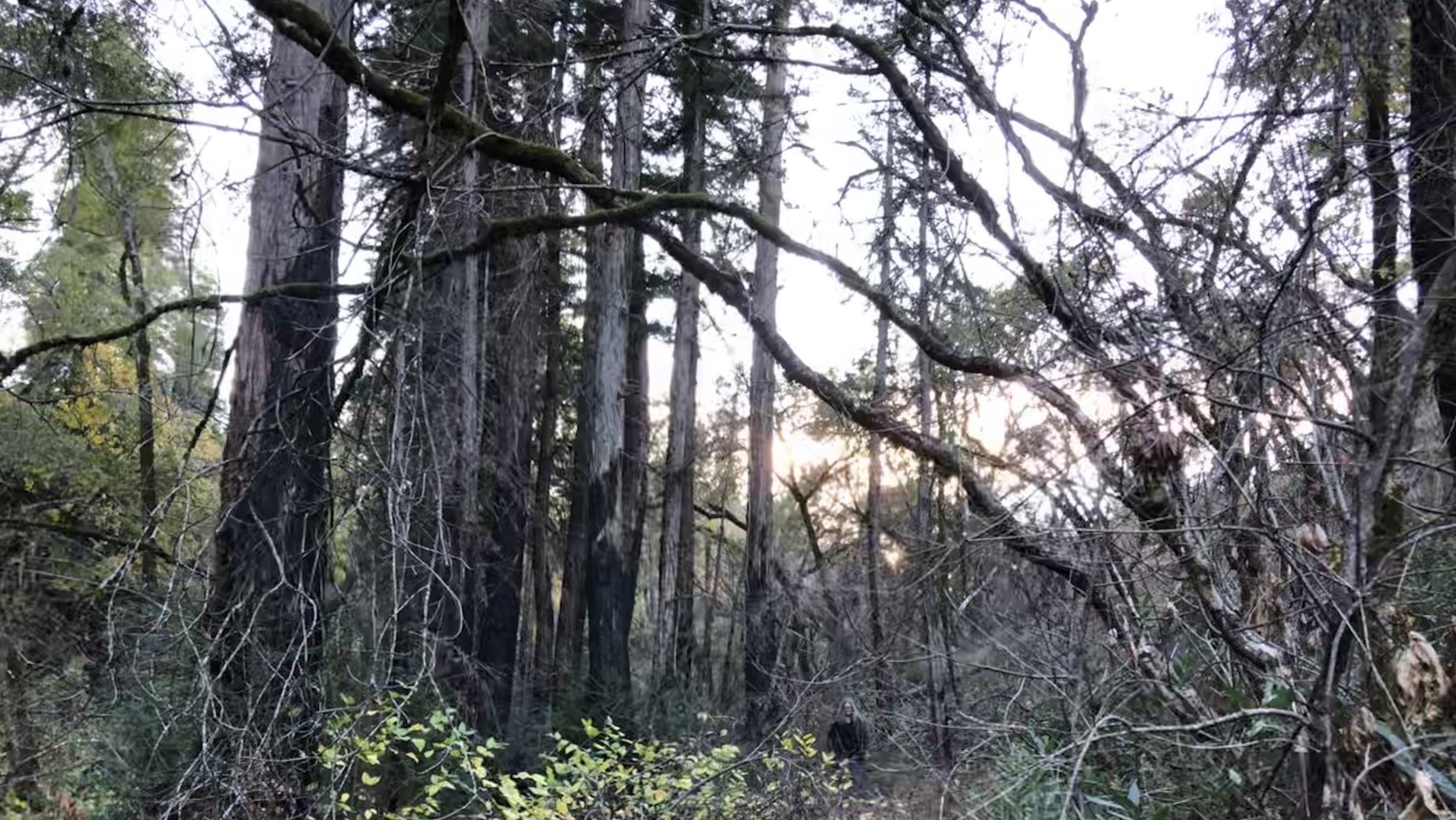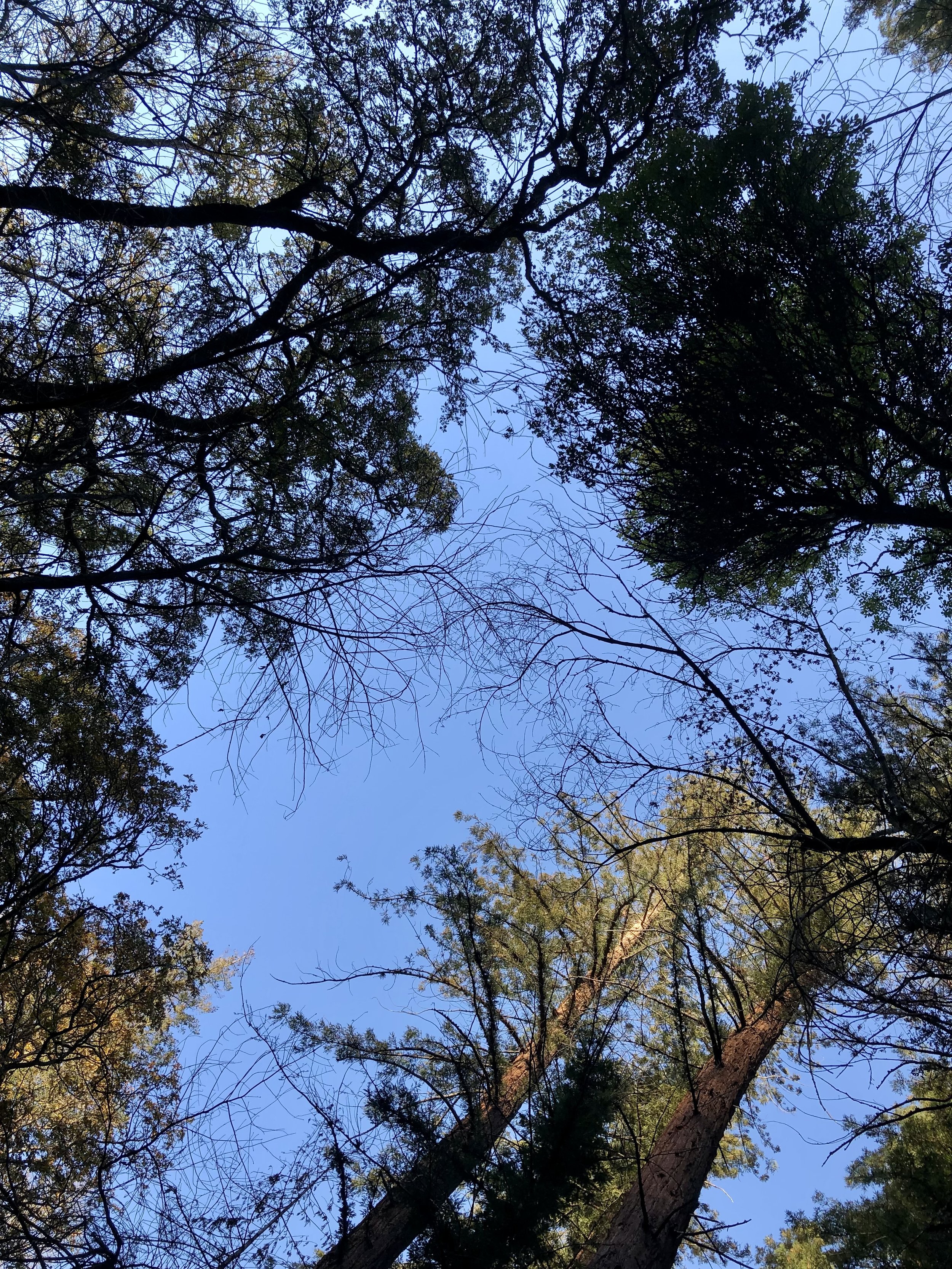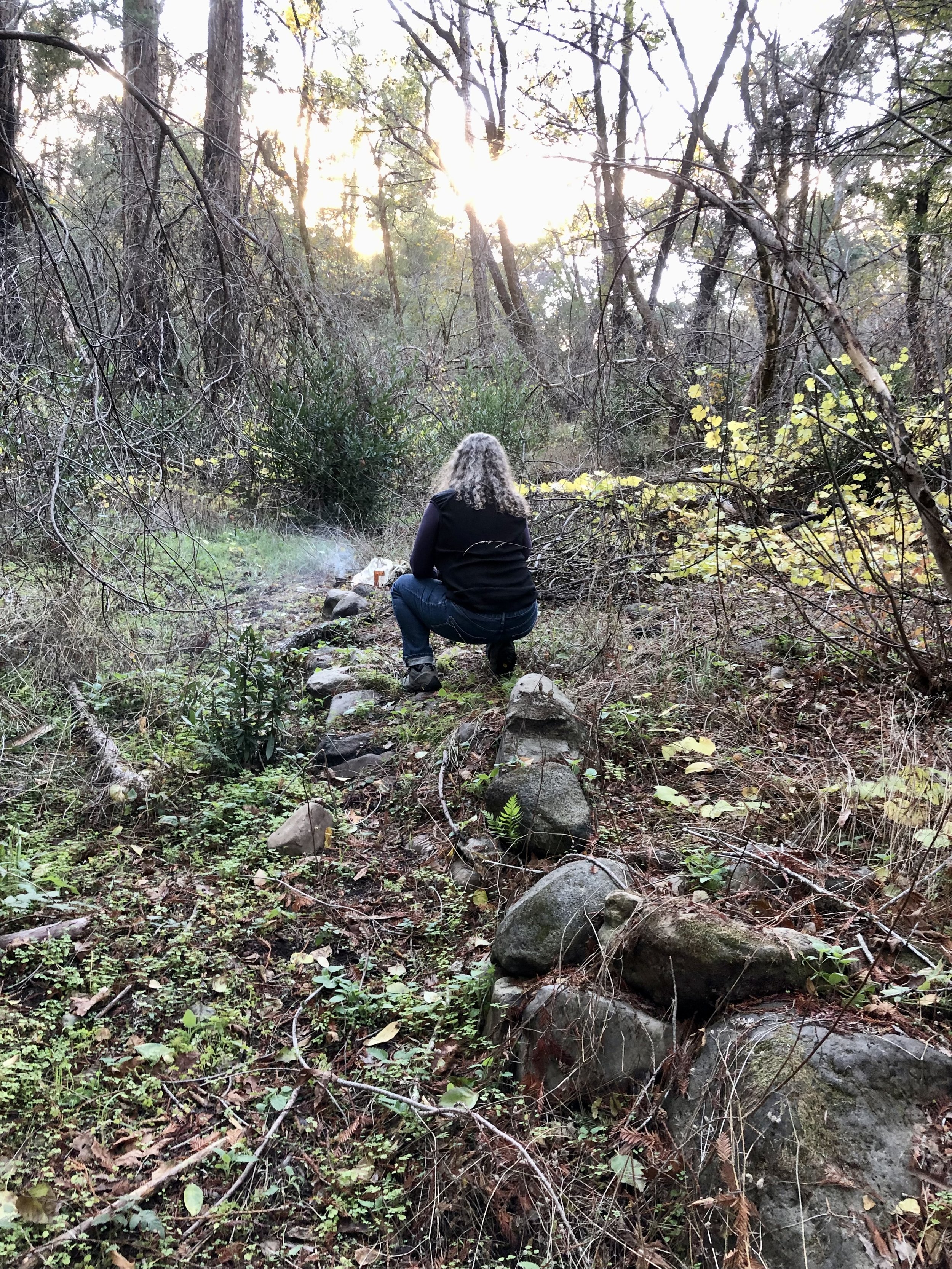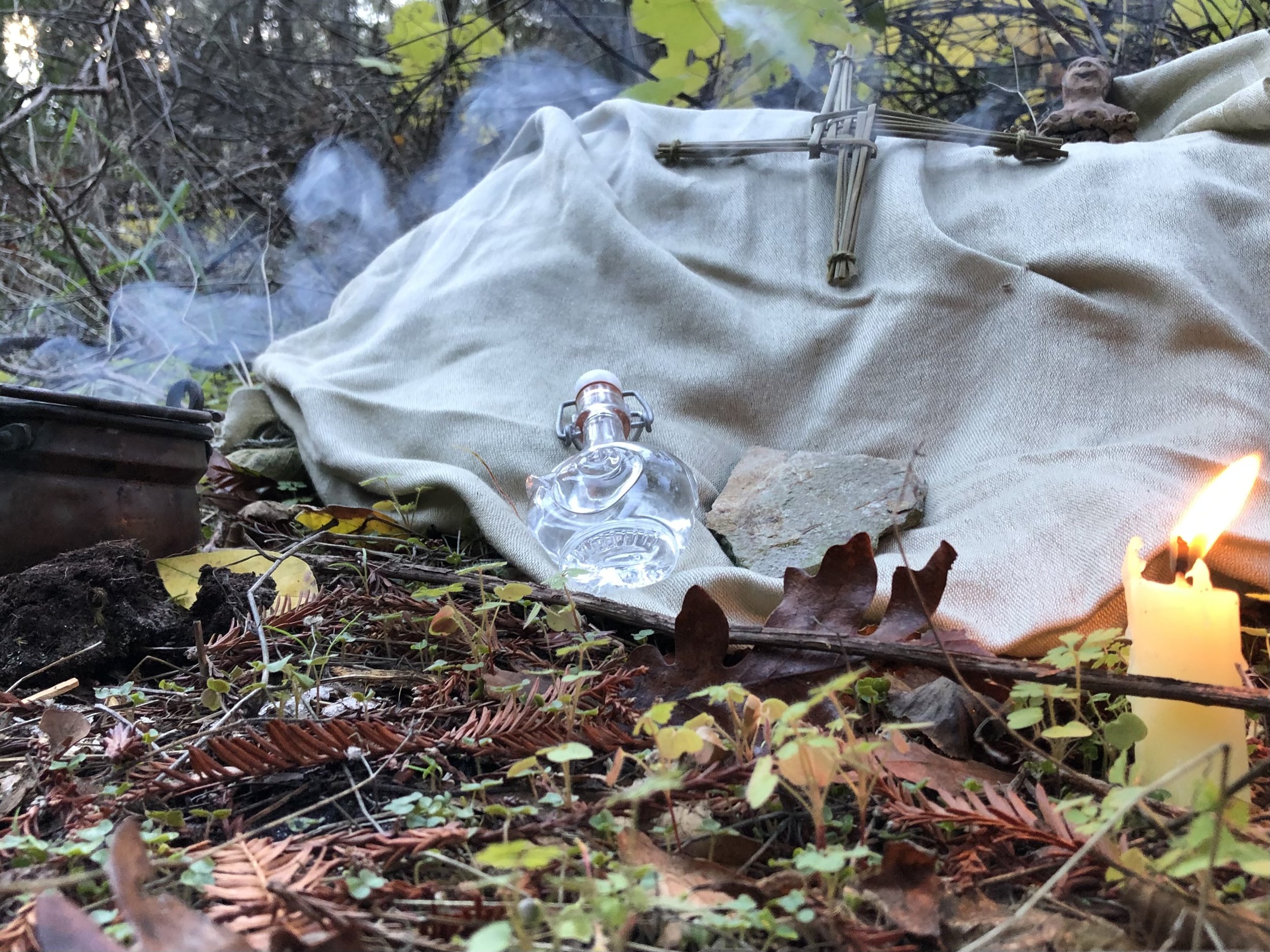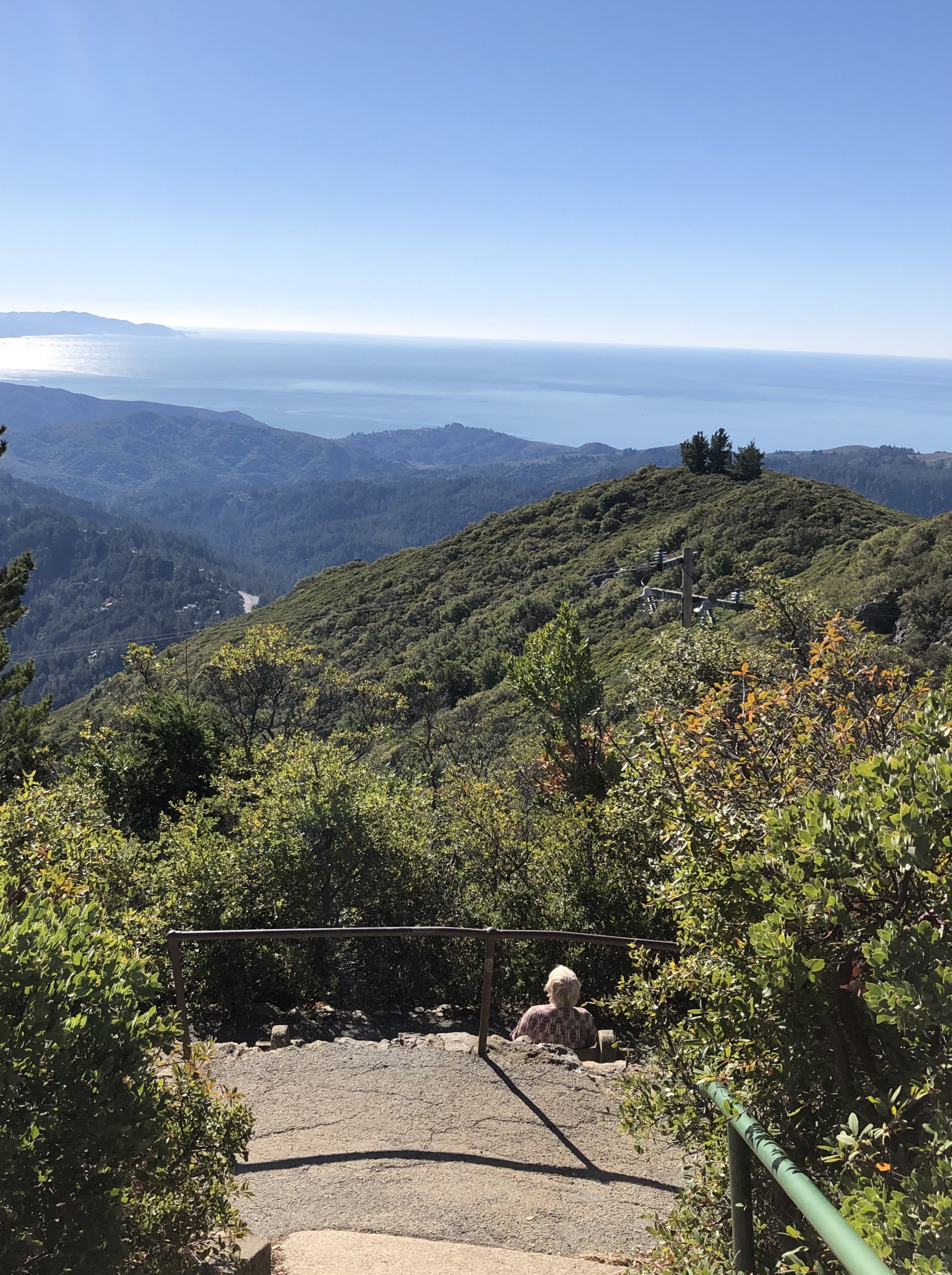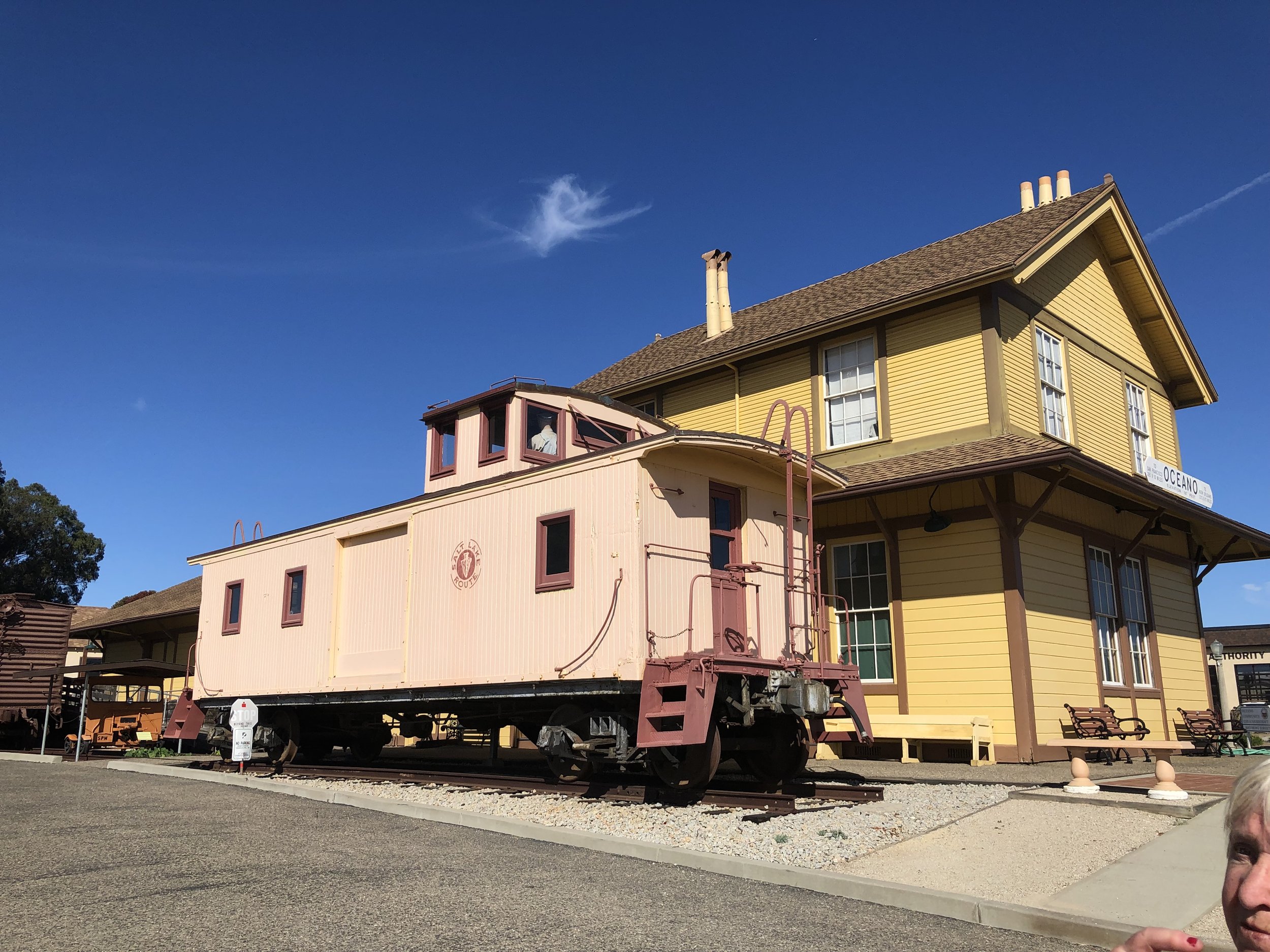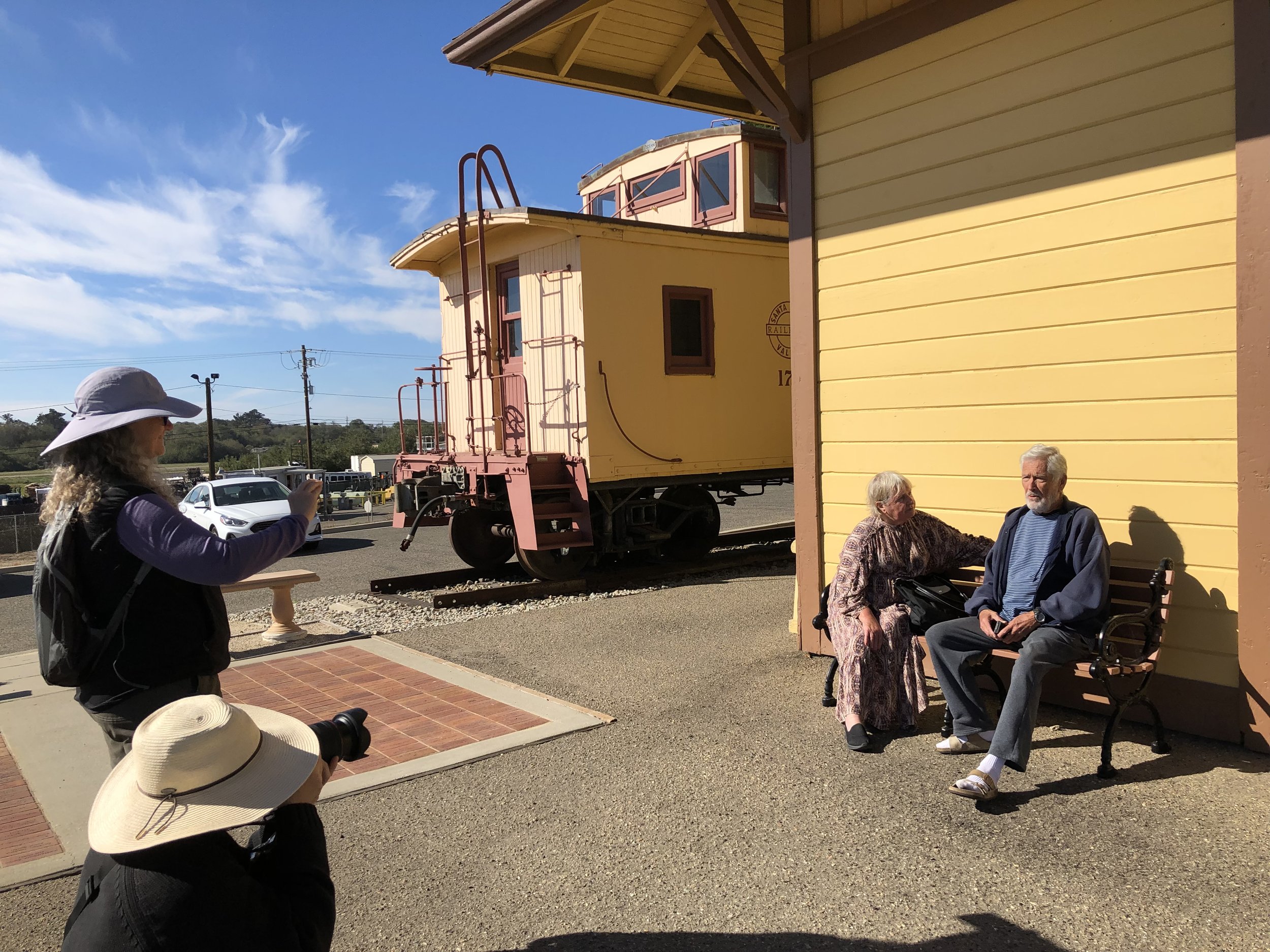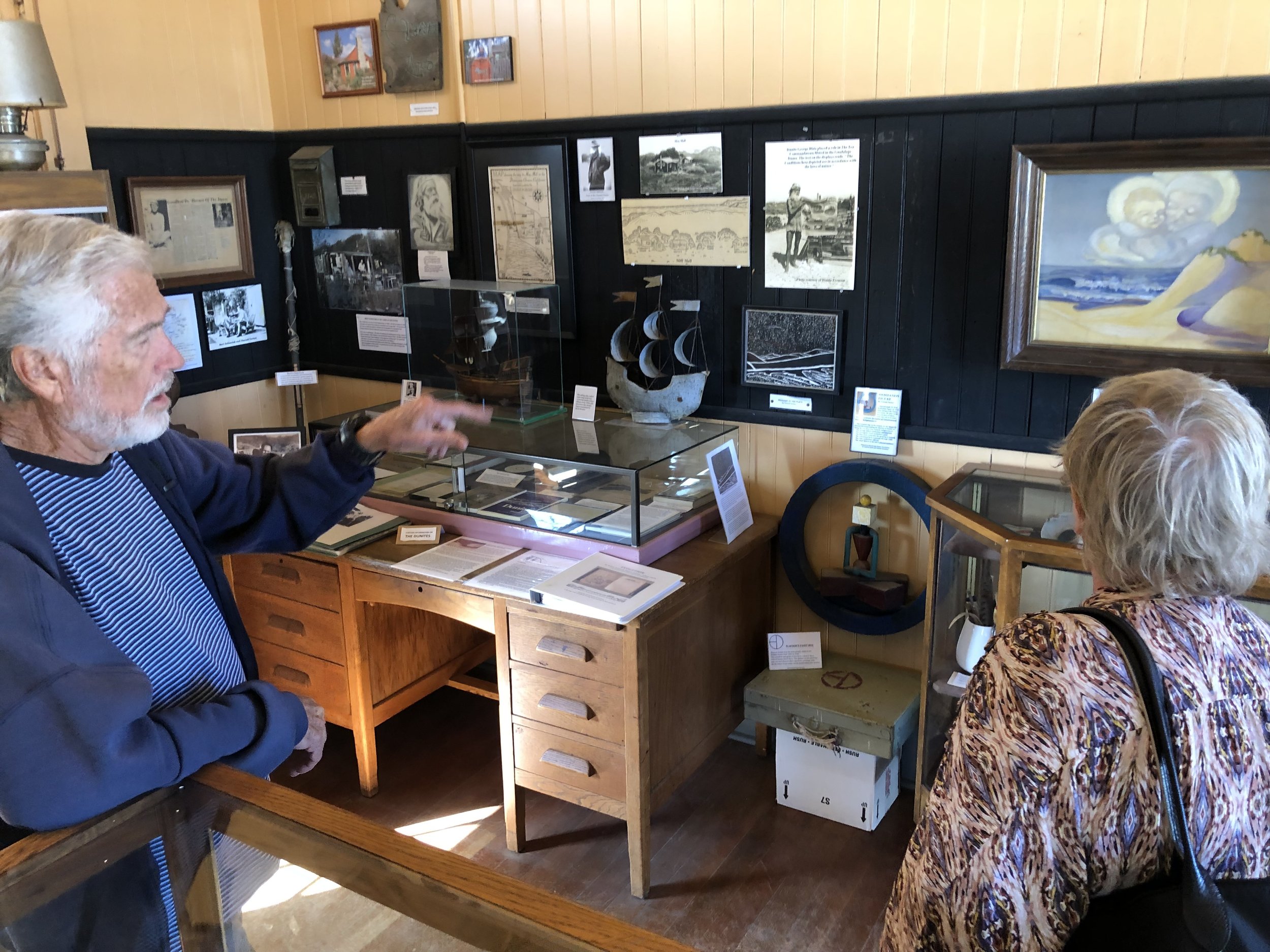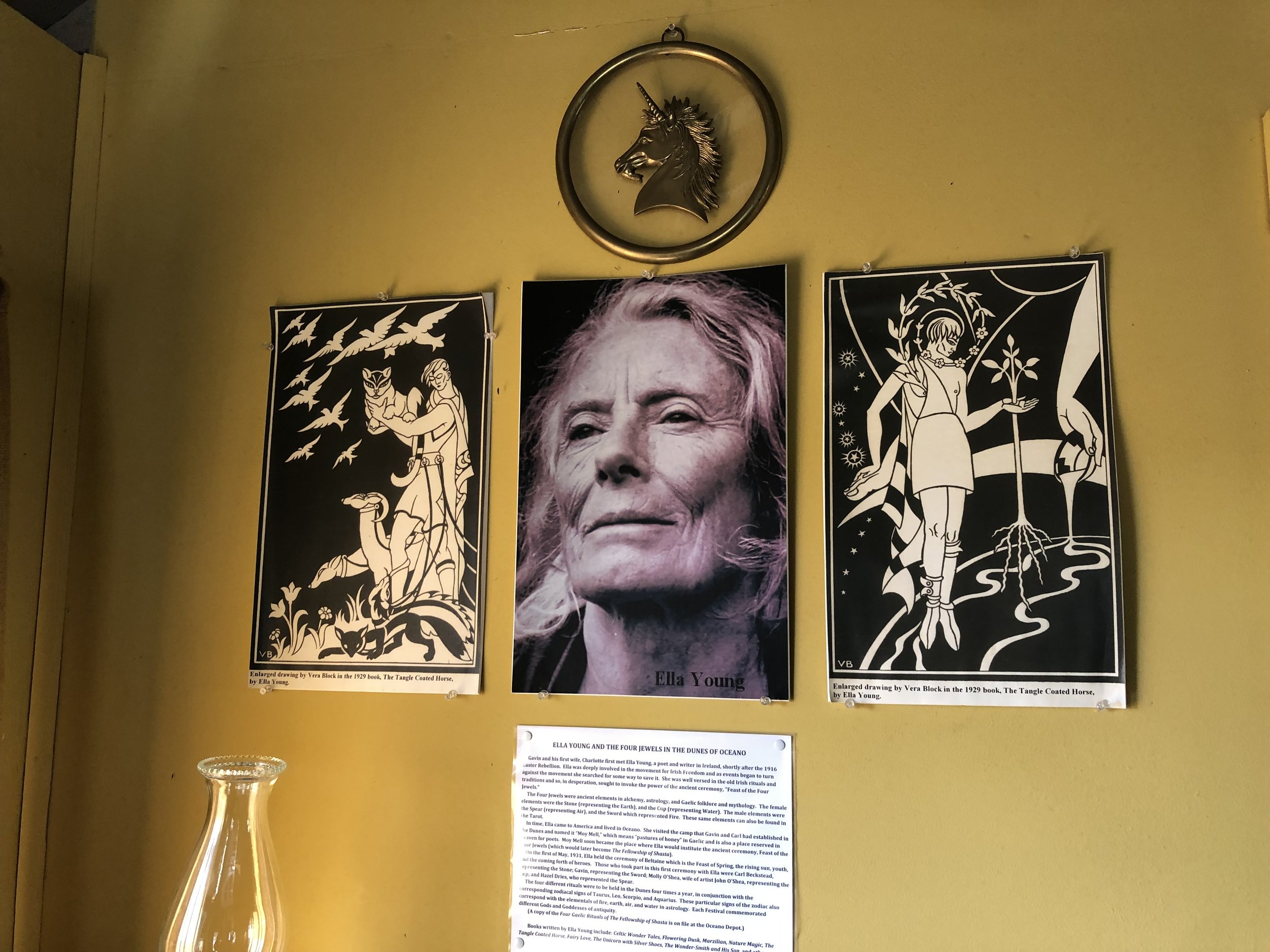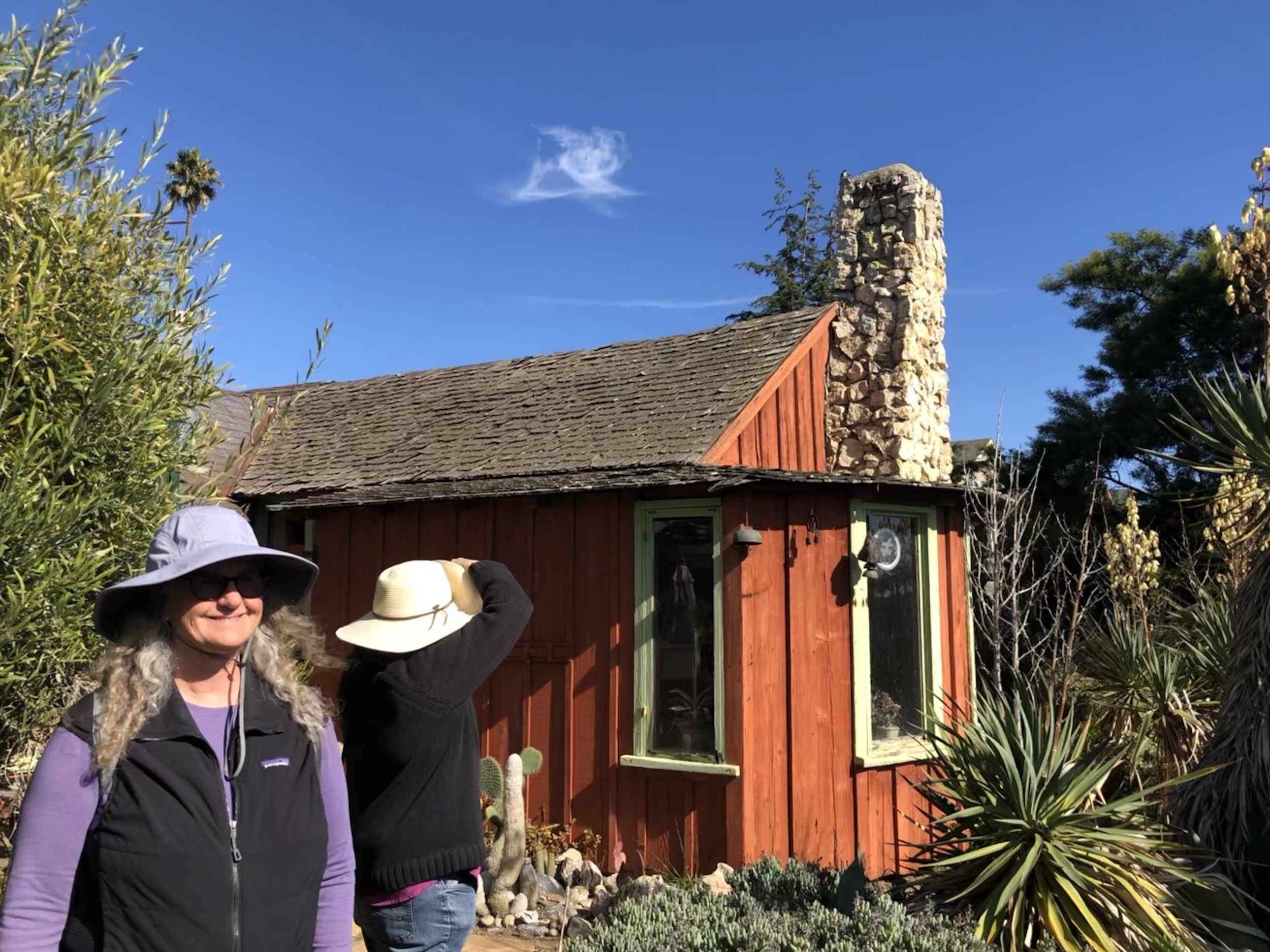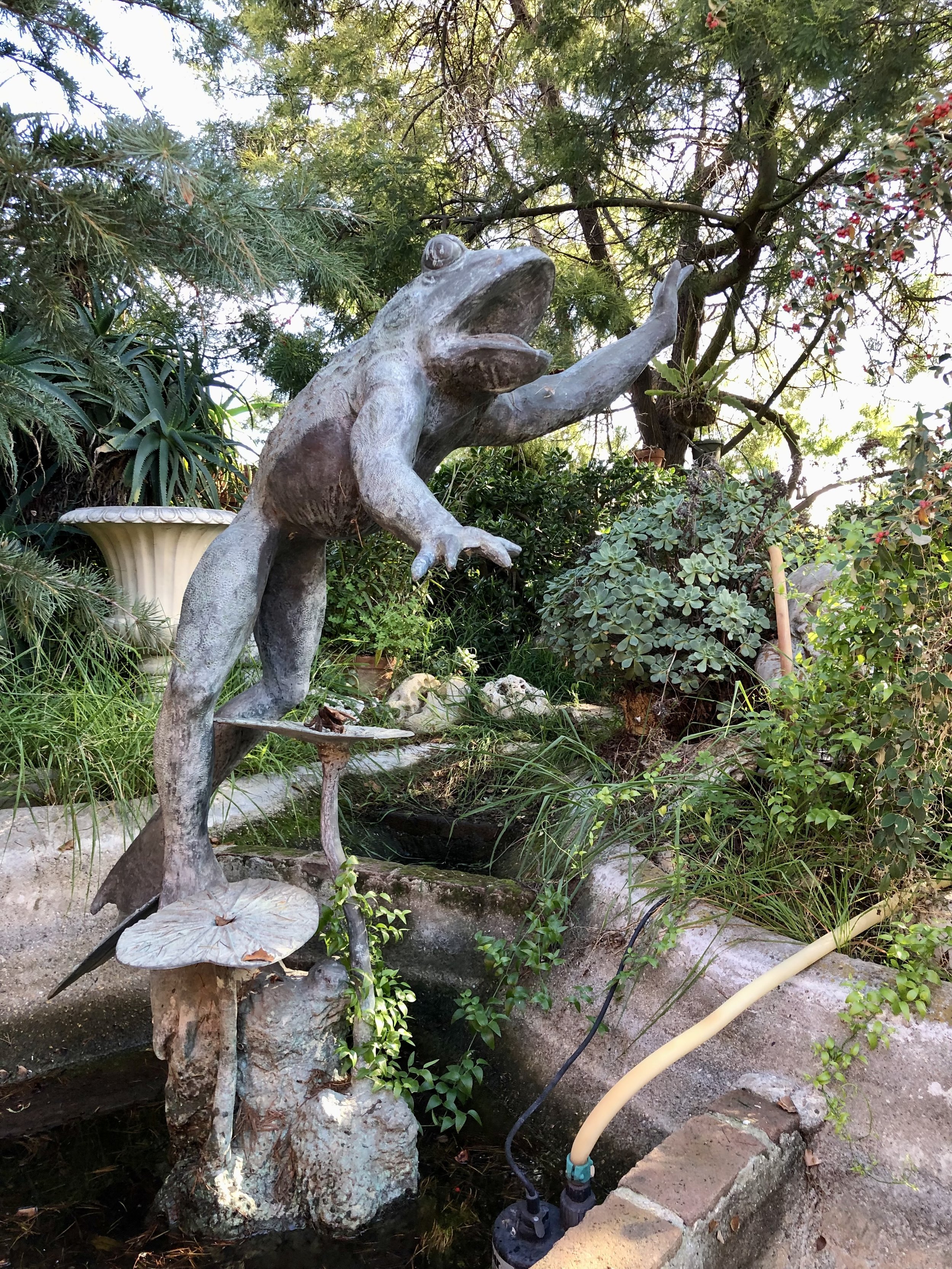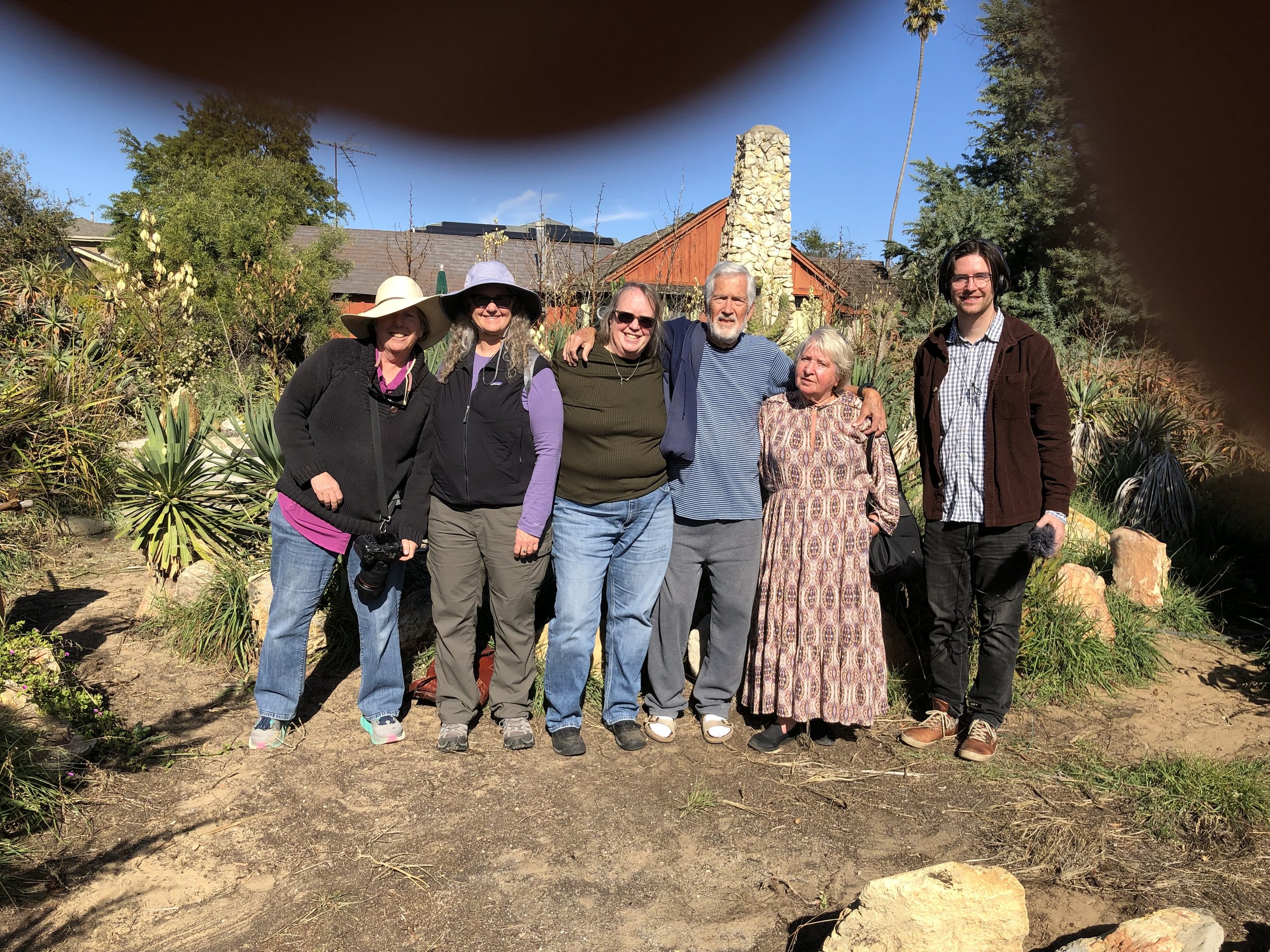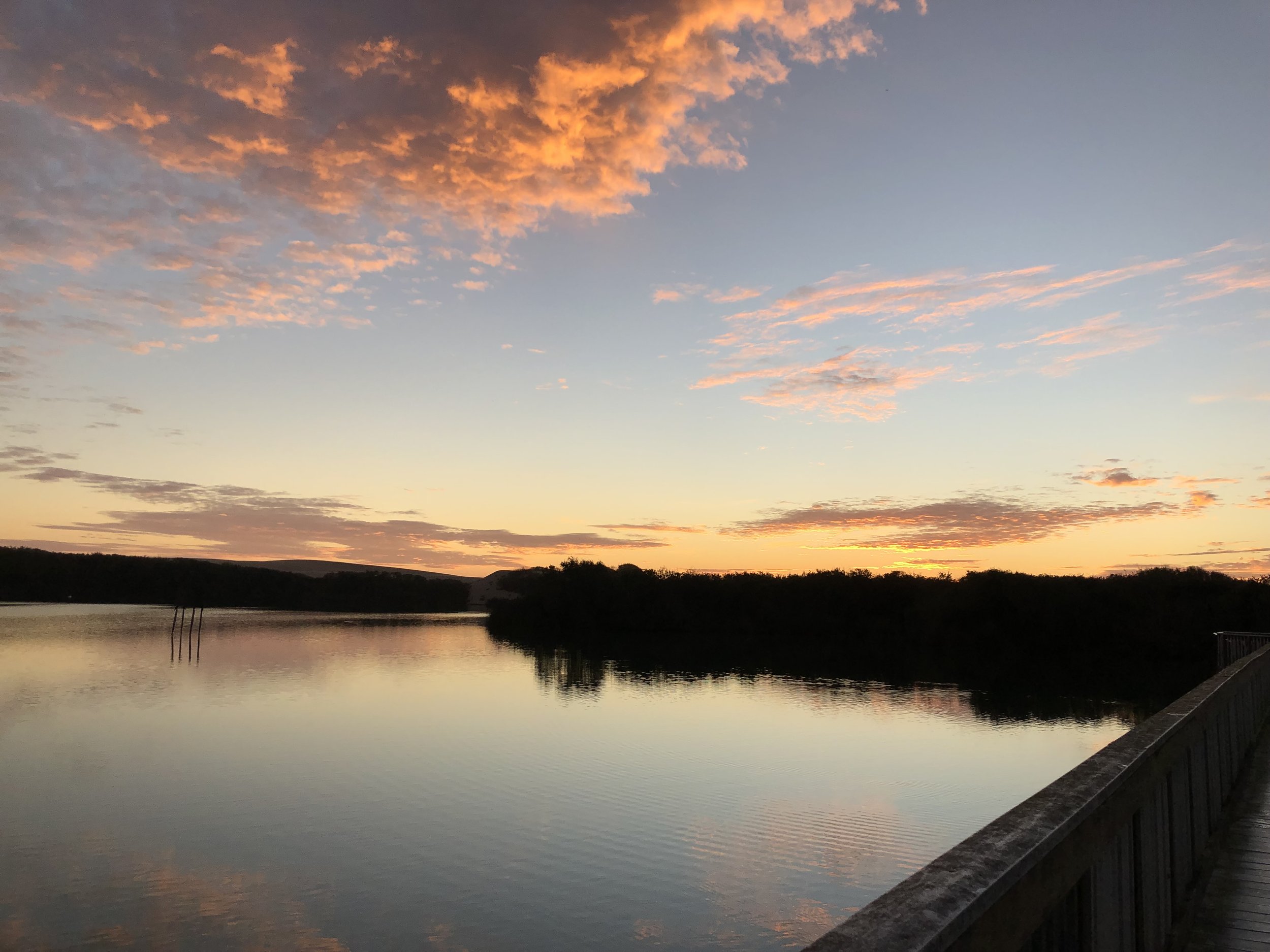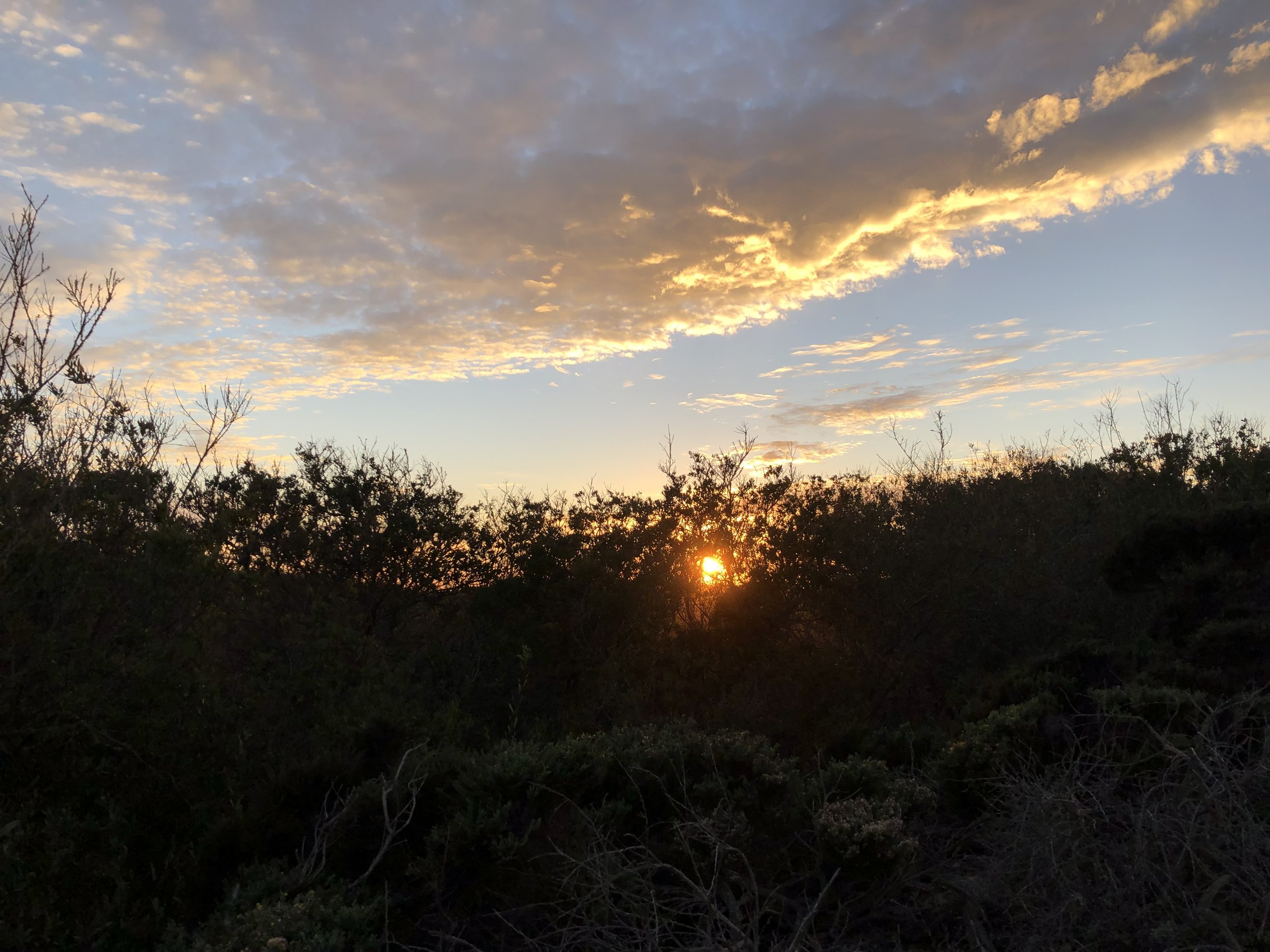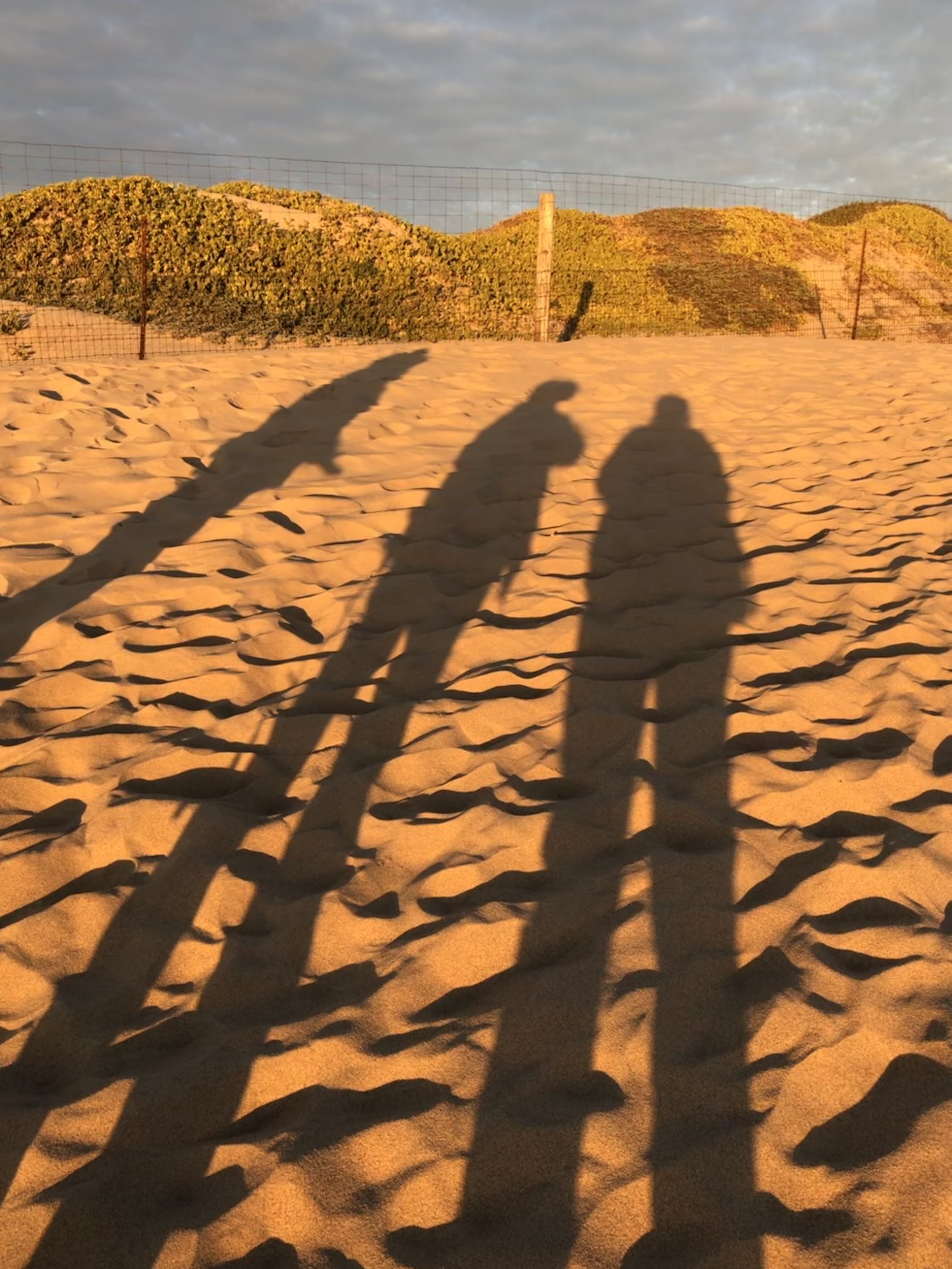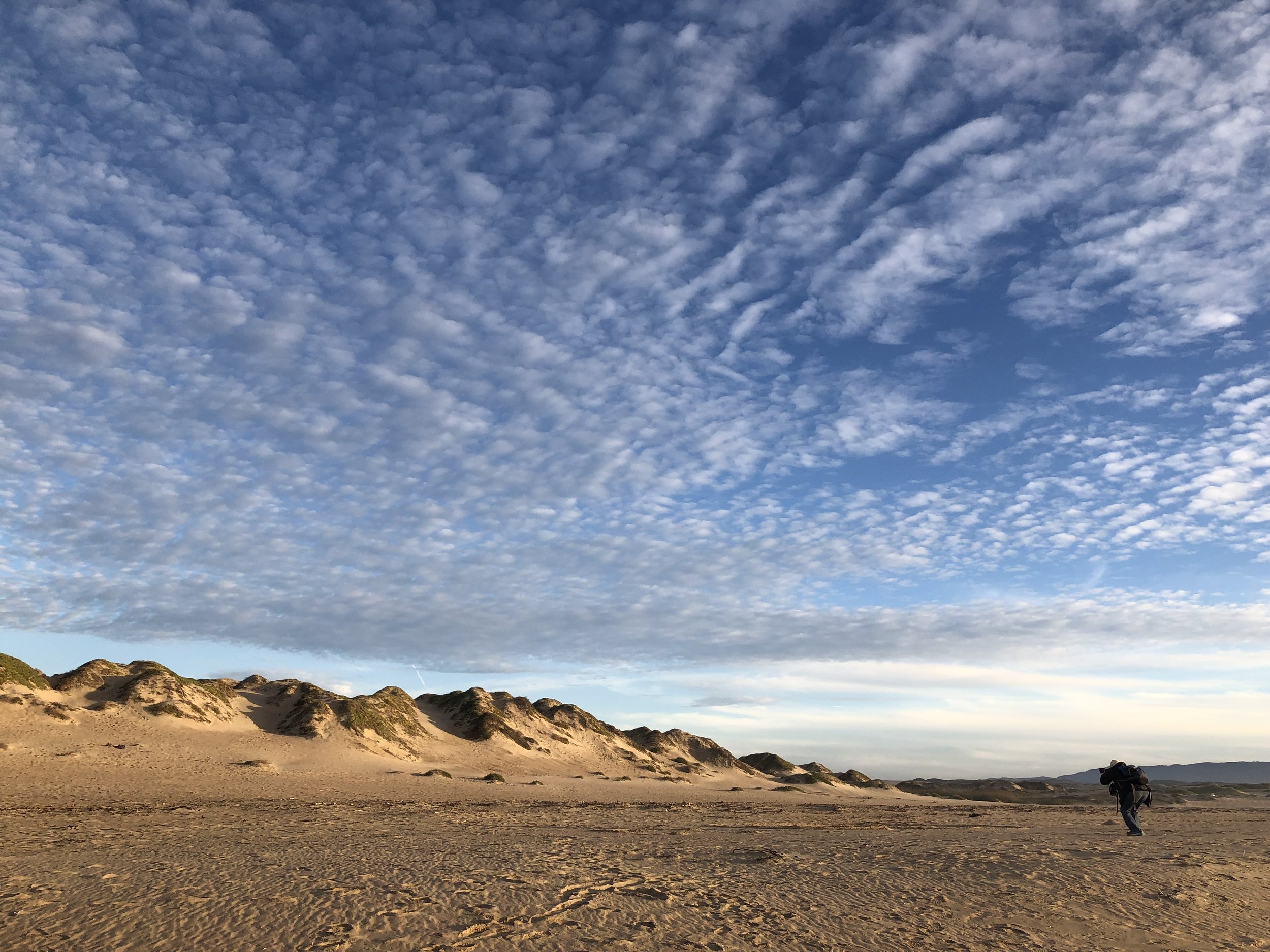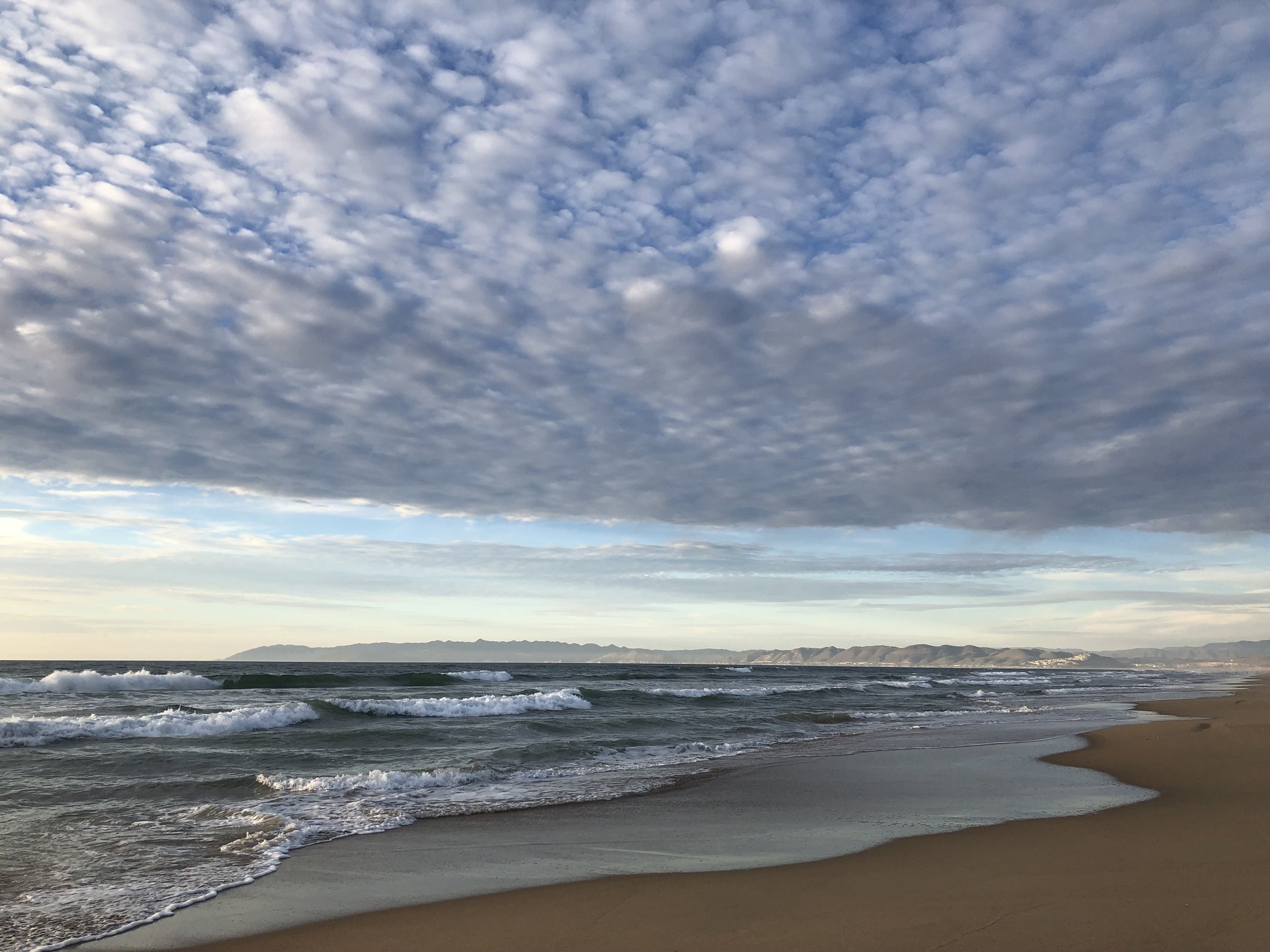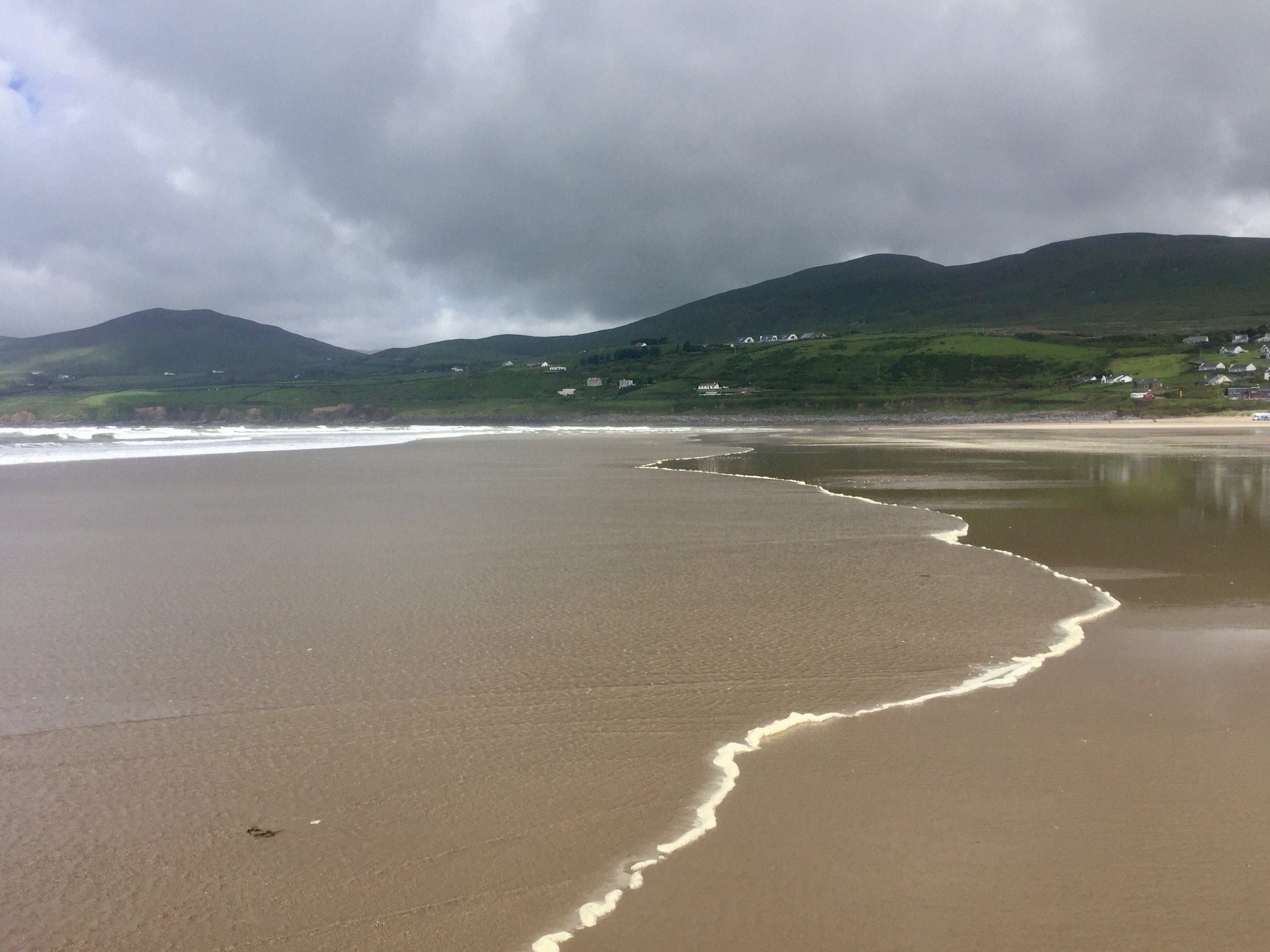A Pilgrimage
Cluan Ard, Ella Young’s cabin in Oceano
I’m Linda Rosewood, a producer at Tulsk Productions. In November I traveled to California with Ella Young’s biographer, Dorothea McDowell to visit places Ella Young knew well.
Ella Young was in her 50s when she left Ireland for America 100 years ago. She never returned. She lived to be almost 90 and no one who met her ever forgot her. I’ve written about Ella Young before on my personal blog and now I’ve been working with Tulsk to continue telling her story with our play, Halcyon Days.
We were met at the airport by my friend Hilary Hamm. The next day Heather Cline, a friend familiar with the North Bay and funding independent media projects, joined us. The late afternoon found us tramping around the sparse oak forest in St. Helena looking for a legendary redwood grove.
We had been told California pagans had gathered at a grove in St. Helena since the 1930s.
We were on a pilgrimage, I suppose, visiting the places Ella loved, making memories, taking photographs, and collecting relics. We began the pilgrimage where her loved ones returned her immortal atoms to the earth. Like people do with saints.
I know Ella was no saint, but as a former Catholic I recognize this compulsion. We had been told the location of the grove by a man who had last been there in the 1980s. He said look for redwoods, fire scared.
And a clearing.
No one had been there for quite a while; there’s no path from the road. It’s not a place a person would go if they didn’t know it was there.
About ten years after Ella died, her friends recorded their memory of her final ritual. Over her ashes, they spoke words she had written for the occasion.
O earth mother and goddess
To thee we give back this body purified by fire.
May the wind be comrades to it.
May the rain be a benediction,
May the stars look on it with kindness.
May the sun evoke blossoms from this dust.Be mindful oh Shasta of the spirit,
Blue turquoise mountain first welcomer,
Be mindful of the spirit
May Taos mountain guardian of the sacred lake
Be mindful
May air first nourisher be mindfulMay this American hillside be mindful
Never the spirit began
The spirit shall cease to be never.
We said goodbye to Heather after a huge barbecue meal at the Rutherford, and the next day we drove to the top of Mt. Tamalpais. On that clear winter’s day we could see that other sacred mountain, Diablo. Ella spoke of these mountains in her interview on KPFA.
Mount Tamalpais. You can easily make contact with Tamalpais. When I came in ’26, I lived in the Casa Madrone near Tamalpais and greeted that mountain. Mount Diablo is another. And between the two there is a path. And there is also what is called a path from Tamalpais because when I was there I used to hear the fairy music. There is a great and marvelous music that many Americans hear and that many Irish hear. It’s orchestral.
Dorothea at Mt. Tam.
Later that day, we had a meeting at the Irish Consulate in San Francisco and learned about a grant program that might support our work on Halcyon Days, so I spent a good part of January writing a proposal. We will hear if we’re funded in May. Sign up for our newsletter to be the first to know.
We spent a few days in Santa Cruz, then drove down the coast. We stopped at Pt. Lobos because Ella loved Pt. Lobos, and met up with our friend Irene, who joined our band of pilgrims.
Point Lobos, that strange promontory, heavy with memories of heathen ceremonies and potent incantations! Lobos is a Dragon with keen mouth unpropitiated. Lobos is to be approached with caution.. I have myself approached it with caution, not to say reverence, and found it gracious. (Ella Young, Flowering Dusk)
The next day we had a date with Norm Hammond at the Oceano museum near Pismo Beach.
Oceano Museum. One of those amazing local museums that tells a huge story in a small space.
Norm loves Ella too, and has done everything he can to keep her memory alive in the local area. He calls her “Godmother of the Dunites.”
Norm and Dorothea and the Dunites exhibit at the Oceano museum.
The Dunites are legendary, and Norm wrote a book about them.
Meanwhile, a new kind of community was coming into being in the dunes -- a ramshackle cluster of cabins populated by artists, hermits, mystics, nature lovers and Lemurians. (The latter believed the long-lost continent of Lemuria would one day resurface from the depths of the Ocean.)
According to Hammond's 1992 book "The Dunites," Spanish-American War veteran, adventurer and poet Edward St. Claire was among the earliest Dunites -- also known as "Sandduners" or "Duners" -- along with such colorful characters such as Slim the Aussie, "Strongman" Paul Henning and George Blais, a reformed alcoholic who preached nudism, vegetarianism and sleeping under the stars. Subsisting primarily on fish and large, plentiful Pismo clams, they saw the dunes as a place of solitude and spiritual enlightenment.
According to [Jan] Scott, the Dunites fell into two main groups: "the artists who wanted the freedom to live as and be who they chose to be, creating as they went, and the castoffs of the Depression, who had little or no choice about where to live. The beach was it."
Perhaps the highest-profile Dunite was Gavin Arthur, born Chester Alan Arthur III. At times an actor, author, astrologer and sexologist. …
Rejecting his aristocratic roots, Arthur moved to Ireland in the early 1920s to aid the Irish Republican Army in its battle for independence. "He connected with Ella Young and she became one of the most influential people in his life," Reid explained, renewing that relationship when the Irish poet emigrated to the United States.
“The Dunites: Building a Utopia in the Oceano Dunes” (KCET)
The cabin of Ella’s friend Gavin is part of the museum, with an exhibit (shrine?) to Ella in the corner.
The cabin is cozy and the perfect size for two or three friends to sit by the fire for a long conversation.
Norm had arranged for us to visit Ella’s garden.
The current owner, Mark Weedon, would be our guide. His family have been the only residents since Ella died there. He said his mother welcomed people like us, seeking a connection with Ella, for many years.
Dorothea holding an Irish cross that belonged to Ella.
Hilary and Irene and Ella’s cabin.
Ella mentions these garden ponds in her memoir, Flowering Dusk.
Happy pilgrims
We had heard all about The Dunites, but it was a mystery to us how anyone could live in the barren dunes of Pismo, now overrun with vehicles. Irene suggested we visit Oso Flaco nearby, where the natural dunes are preserved.
When we got there, the Dunites made sense. The dunes are a thriving, wild, lively scrub forest, full of birds and shade, and hidden lakes.
They are a treasure and a wonder.
It’s more than a mile from the parking lot to the shore. By the time you get there, you’ve been on a journey for sure.
The sun was beginning to set.
Irene’s pictures are breathtaking, and she’s going to publish them.
As I looked to the north and the south, I was reminded of an Irish beach described by Ella in Flowering Dusk. I wrote about my visit to that beach a few years ago. Ella wrote:
I am staying with Maud Lloyd, the artist, in her house at Inch, County Kerry. It is a strong two-story house built of stone and stands on a hill—the only house on the hill, with no other house in sight. Far below stretches the whole country-side; the great strand of Inch, the Atlantic a-wash on its border; the sand dunes; the deep inlet of the sea beyond and behind the sand dunes; the range of Macgillycuddy's Reeks sharp-pointed against the sky. Maud Lloyd is at home here, for she loves to paint the whole ranges of mountains, river-inlets, and meadows.
It is early Spring—the loveliest time of year in this part of Ireland. … The strand, colored like pale ivory, stretches for miles—only sea-birds there and ourselves! The full moon edges the long, incoming waves with silver flame—the new moon is silver and rose. But the strand is the most wonderful thing. It is very slightly inclined to the sea, and when the waves make an onset they run up very far, leaving their comrades as it were bunched in wonderment a long way out.
I journeyed to the beach of Oso Flaco like a good pilgrim. I sat down like Ella would have and watched a sunset. Just like at Inch, Ella found a home here among the artists and revolutionaries. Just like at Inch, she found the wild ocean to the west, dunes to the east, and a dark promontory cradling the northern horizon. Just like at Inch, a wide ivory beach runs north to south with its small waves reaching duneward leaving their comrades behind.
Perhaps Ella never returned to Ireland because she never left it.
The beach at Oso Flaco, San Luis Obispo County, California
The beach at Inch, Dingle, Co. Kerry.
. All photos by Linda Rosewood.
